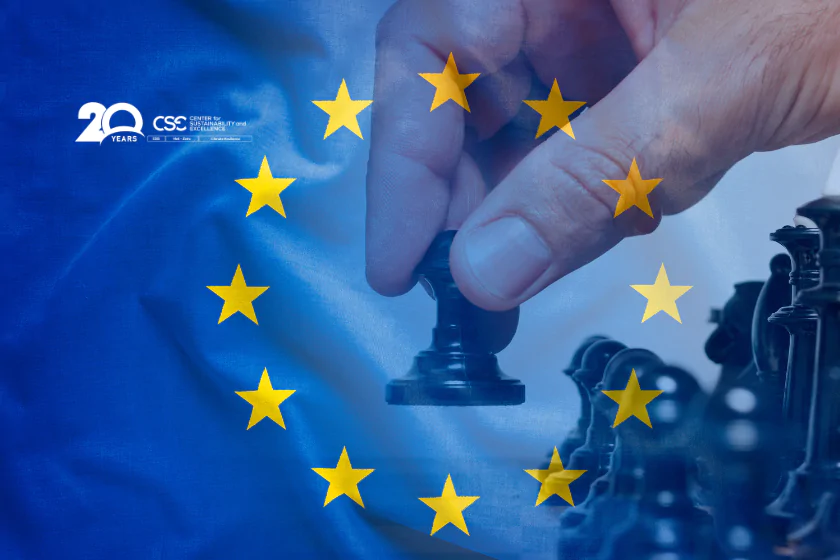On September 2, 2025, the European Commission unveiled its most ambitious climate plan yet: a proposal to cut greenhouse gas emissions by 90 percent by 2040. More than just a number, this target has the potential to redefine Europe’s role in global climate politics—and reshape its economy, security, and industrial innovation along the way.
Yet the path forward is fraught with challenges. With the Danish presidency of the Council of the EU at the helm, European leaders must balance domestic tensions, geopolitical headwinds, and climate backlash at home.
Why the 2040 Target Matters
The 2040 target comes at a time when Europe’s global climate leadership is under pressure. The U.S. administration of Donald Trump has rolled back international cooperation, signaling retaliation against countries that support climate rules in sectors like shipping. Meanwhile, major economies such as China and India could interpret a weaker EU stance as a license to lower their own ambitions.
Put simply, if the EU cedes ground on climate, it risks losing one of its most important tools for global influence. A bold 2040 target is not only about emissions—it is about maintaining Europe’s credibility as a climate leader.
Divisions Within Europe
Not all EU members are on board. While Denmark, Finland, Luxembourg, the Netherlands, Slovenia, and Spain strongly support the 90 percent goal, countries like Italy, Poland, and the Czech Republic remain opposed. Others are willing to negotiate if more flexibility is offered.
Pragmatism will be key. With the final UN deadline for the EU’s nationally determined contribution looming on September 25, 2025, Denmark has just weeks to secure an agreement ahead of COP30.
Carbon Credits: Flexibility or Loophole?
One of the most debated aspects of the proposal is the inclusion of carbon credits, which could account for up to 3 percent of the reductions. These credits allow EU states to count verified emissions cuts achieved abroad toward their targets.
Supporters, including EU climate chief Wopke Hoekstra, argue that credits can serve as “bridges” with partners in Africa and Latin America, delivering social and economic benefits alongside emissions reductions. They may also accelerate innovation in technologies such as carbon capture, storage, and bioenergy.
Critics, however, worry about accountability. Civil society groups note that carbon markets have a history of transparency issues. Hoekstra has countered that the EU will impose strict verification to ensure credibility and impact. Importantly, the EU’s 2030 and 2050 goals remain purely domestic, limiting reliance on external offsets to this interim stage.
Climate Meets Security and Competitiveness
The 2040 target signals a new paradigm in EU climate policy. Climate action is no longer just about environmental protection—it is about energy security, industrial competitiveness, and geopolitical stability.
Europe faces high energy prices, farmer protests, and tighter defense budgets. Without pragmatic mechanisms like carbon credits, an ambitious target could prove politically unfeasible. The Danish presidency is working to navigate these trade-offs, even as it deepens ties with sub-national actors such as California, a state that continues to push forward on climate despite Washington’s reversals. By signing a partnership with California while carefully avoiding a direct clash with Washington, Denmark signaled its strategy of quiet resilience.
The Road to COP30
The coming months will be decisive. Denmark must balance ambition with realism, ensuring that the EU arrives at COP30 with a strong, united stance. At stake is not just Europe’s ability to meet its climate obligations, but its ability to fill the vacuum left by the United States in global climate governance.
The 2040 target, then, is more than a percentage. It is a litmus test for whether the EU can embed climate action into the broader frameworks of security, innovation, and global partnerships.
A Defining Decade
As Europe steps into this new decade, it faces a stark choice. Retreat from ambition and risk losing relevance, or embrace pragmatic solutions that tie climate action to competitiveness and security. The 2040 target is a cornerstone of that choice.
For policymakers, businesses, and civil society alike, the lesson is clear: climate cannot be siloed. It must be integrated into the fabric of Europe’s economic and geopolitical strategy.
CSE is proud to announce the Europe | Certified Sustainability (ESG) Practitioner Program – Advanced Edition 2025, taking place on November 27-28 & December 1st, 2025 (Live Sessions). This flagship training, approved by CMI, CPD, and GRI, and enriched with the Omnibus Package (ESRS), is designed to equip sustainability professionals and executives with the latest global expertise, practical tools, and strategies to meet the EU’s evolving ESG requirements.
Participants will gain a recognized certification while joining CSE’s international network of FT 500 companies, governments, and NGOs, ensuring they are well-prepared to bridge the green skills gap and lead their organizations in a rapidly changing regulatory landscape.
Sources & Further Reading
This article draws on reporting and analysis by Emil Sondaj Hansen (September 2, 2025), an observer of European climate and energy policy, as published in Carnegie Europe. Read the full piece here.







